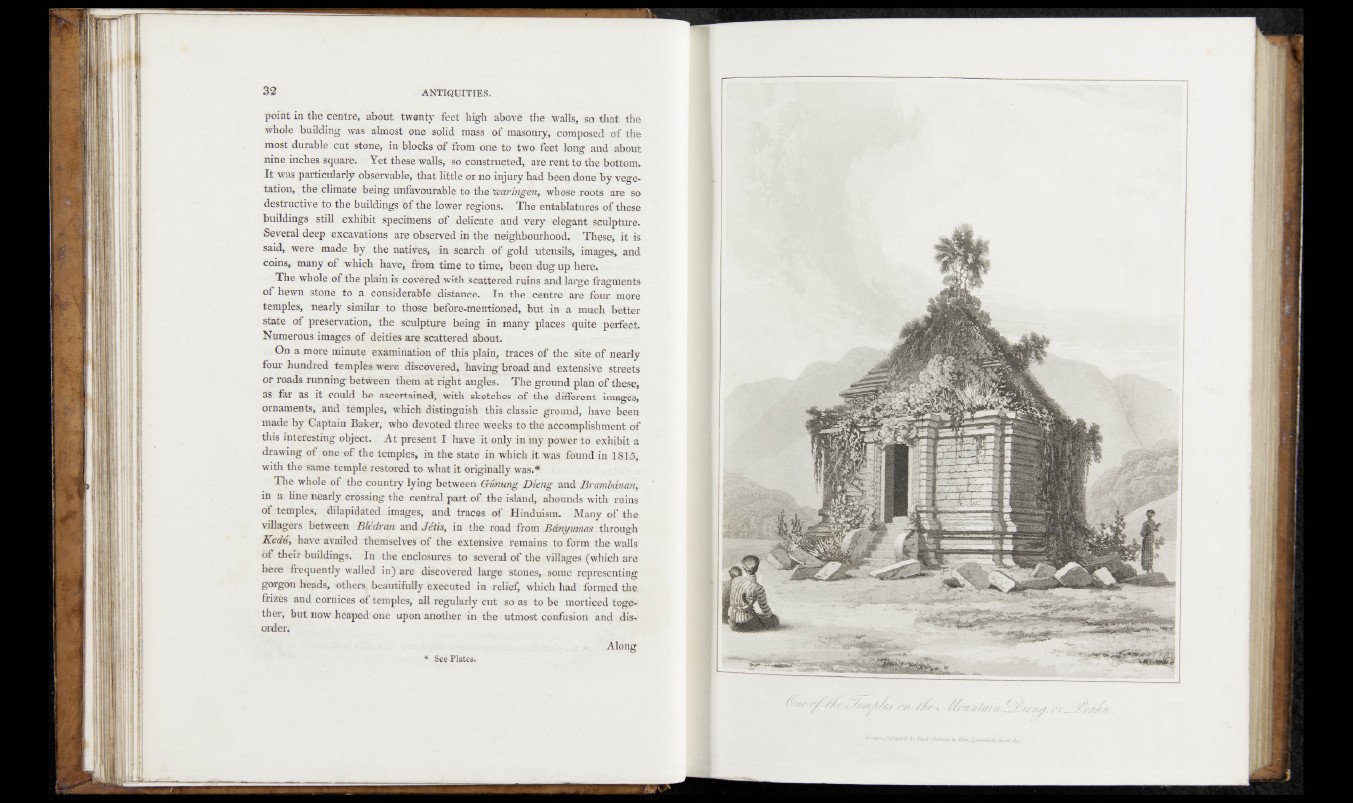
point in the centre, about twenty feet high above the walls, so that the
•whole buiding was almost one solid mass of masonry, composed of the
most durable cut stone, in blocks of from one to two feet long and about
nine inches square. Yet these walls, so constructed, are rent to the bottom.
I t was particularly observable, that little or no injury had been done by vegetation,
the climate being unfavourable to the waringen, whose roots are so
destructive to the buildings Of the lower regions. The entablatures of these
buildings still exhibit specimens of delicate and very elegant sculpture.
Several deep excavations are observed in the neighbourhood. These, it is
said, were made by the natives, in search of gold utensils, images, and
coins, many of which have, feom time to time, been dug up here.
The whole of the plain is covered with scattered ruins and large fragments
of hewn stone to a considerable distance. In the centre are four more
temples, nearly similar to those before-mentioned, but in a much better
state of preservation, the sculpture being in many places quite perfect.
Numerous images of deifies are scattered about.
On a more minute examination of this plain, traces of the site of nearly
four hundred temples were discovered, having broad and extensive streets
or roads running bettffeën them at right angles. The ground plan of these,
as far as it could be ascertained, with sketches of the different images,
ornaments, and temples, which distinguish this classic ground, have been
made by Captain Baker, who devoted three weeks to the accomplishment of
this interesting object. At present I have it only in my power to exhibit a
drawing of one of the temples, in the state in which it was found in 181,5,
with the same temple restored to what it originally was.*
The whole of the country lying between Grimung Diehg and Brambdnan,
in a line nearly, crossing the central part of the island, abounds with rüins
of temples, dilapidated images, and tracés of Hinduism. Many of the
villagers between Biêdran and Jétis, in the road from Bónyumas through
Kedli, haveavaiied themselves of the extensive remains to form the wialis
of their buildings. In the enclosures to several of the villages (which are
here frequently walled in) are discovered large stones,, some representing
gorgón heads, others. beautifully executed in relief, which had formed the
ftizès and cornices of temples, all regularly cut so as to be morticed toge-
tfaer, hut now heaped one upon another in the utmost confusion and disorder.
* See Plates.
Along